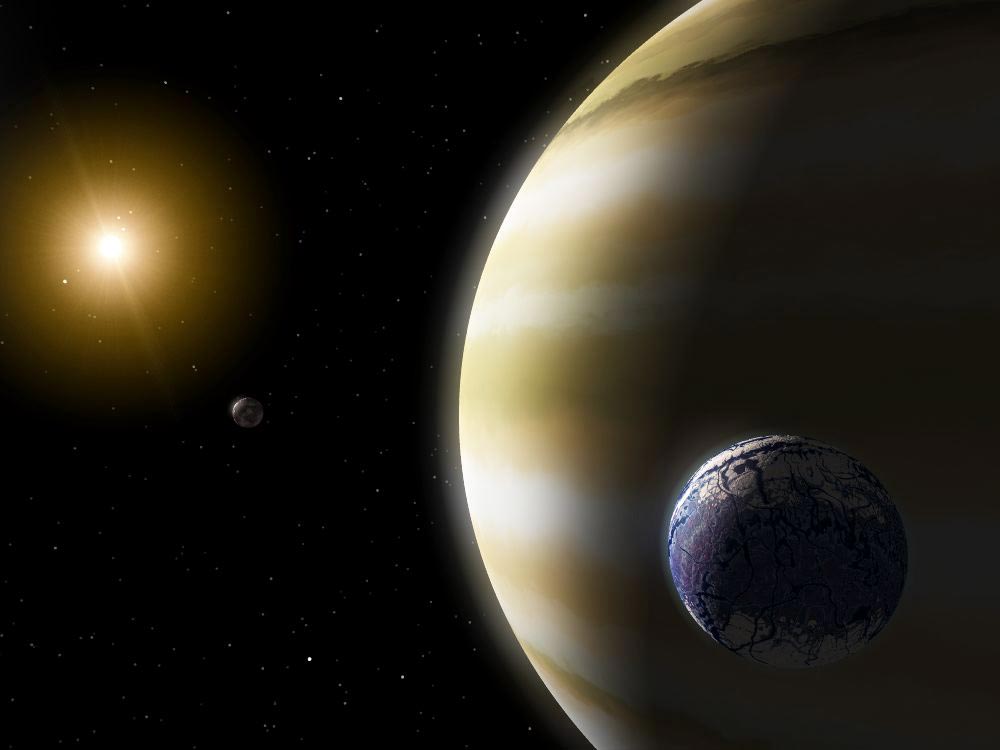Scientific American | Alex Teachey | 2017 Jul 27
For years I have been fascinated by the search for exomoons—that is, moons orbiting planets in other star systems. These worlds are exciting for a whole host of reasons: they could tell us a great deal about the processes that formed our solar system and others, and whether we share a common formation history with the estimated hundreds of billions of planets in the Milky Way. There's reason to think moons may play an important role in the habitability of their host planets, as some scientists think our Moon has influenced the evolution of life on Earth. And of course, if moons are habitable in their own right, they stand to expand dramatically the amount of real estate in the Universe where life could arise and flourish. The moons in our Solar System are truly remarkable worlds, astonishingly different from one another, and there's every reason to think exomoons could be equally diverse and exotic.
But so far, no one in the scientific community has been able to produce an unambiguous detection of an exomoon. It's not for lack of trying; there are a handful of us around the world actively seeking these objects, and some have dedicated many years of work to the problem. But exomoons are spectacularly tricky to find. They tend to be much smaller than planets, making their transits—small dips in the intensity of the starlight as they pass in front of the star from our point of view—quite shallow, and "lost in the noise." And every time their host planet transits, the moons show up in a different place, making them particularly difficult to detect. Ingenious indirect methods, like looking for the moons' gravitational influence on their host planet, are now routinely employed as part of the search. But this work has been computationally demanding and requires exceptionally careful analysis. ...
After carefully analyzing an ensemble of the highest quality planetary transit signals, we have determined that exomoons appear to be quite rare in the inner regions of star systems (regions of space close to the host star). This finding was both remarkable and, frankly, a bit disappointing. ...
In any case, there was another result in our paper that may make a considerably larger splash, which you may have even read about in the news, or soon will: We announced our identification of a single exomoon candidate, indeed the strongest candidate we've seen in the five year history of the Hunt for Exomoons with Kepler (HEK) collaboration. The system, Kepler-1625 b, has withstood a host of preliminary tests aimed at ruling out the presence of a moon, and our proposal to observe this system with the Hubble Space Telescope was recently accepted. We are thrilled to get the chance to observe with Hubble, and hope that the observation will confirm our suspicion unambiguously that this is a genuine exomoon detection, which would be the first of its kind. ...
Possible first sighting of an exomoon
Phys.org | 2017 Jul 28
HEK VI: On the Dearth of Galilean Analogs in Kepler
and the Exomoon Candidate Kepler-1625b I - Alex Teachey, David M. Kipping, Allan R. Schmitt
- arXiv.org > astro-ph > arXiv:1707.08563 > 26 Jul 2017

